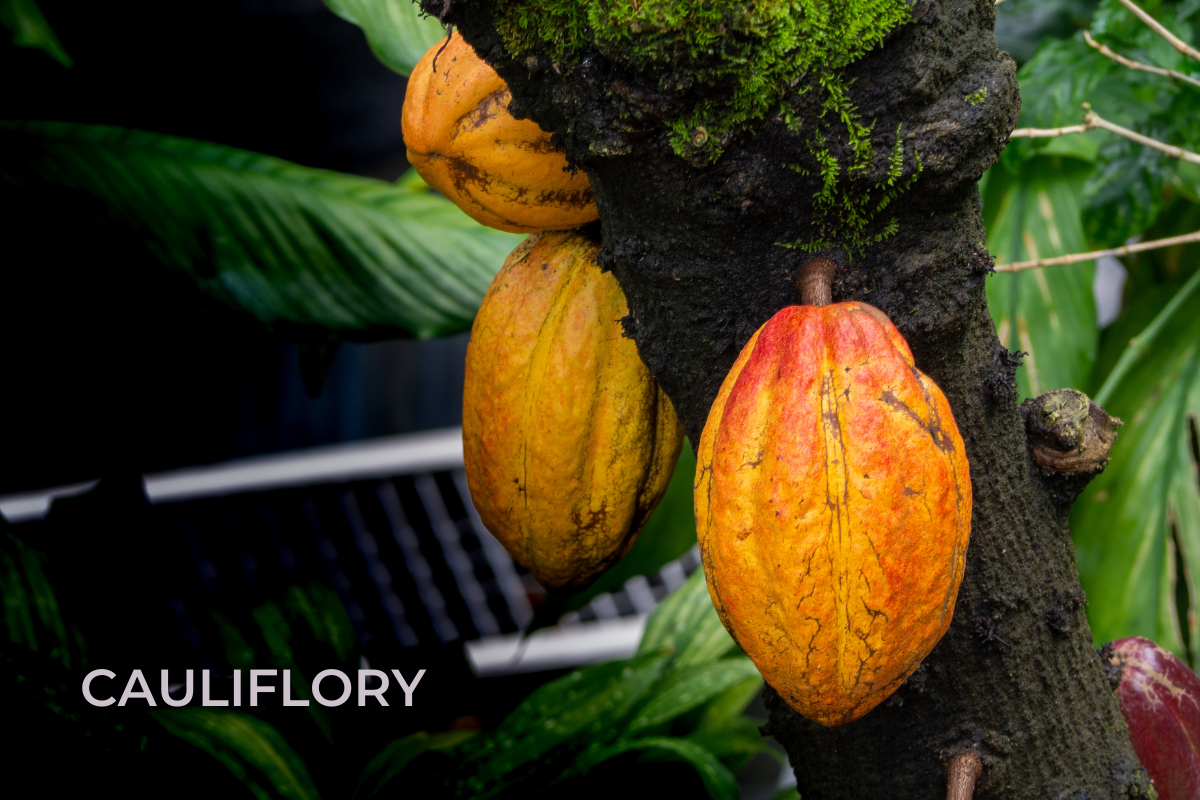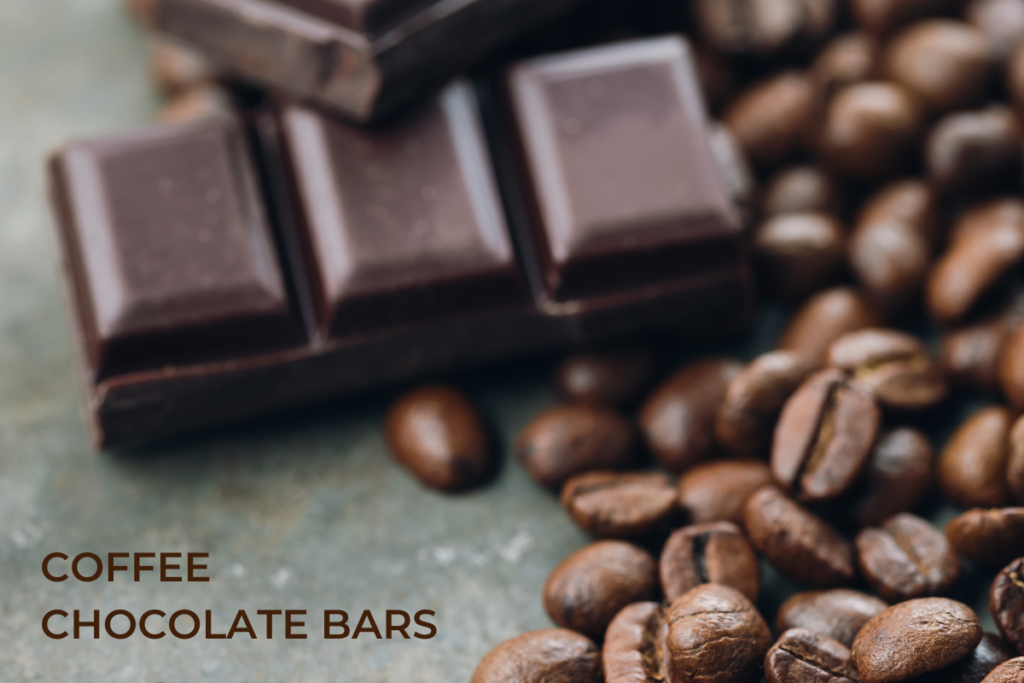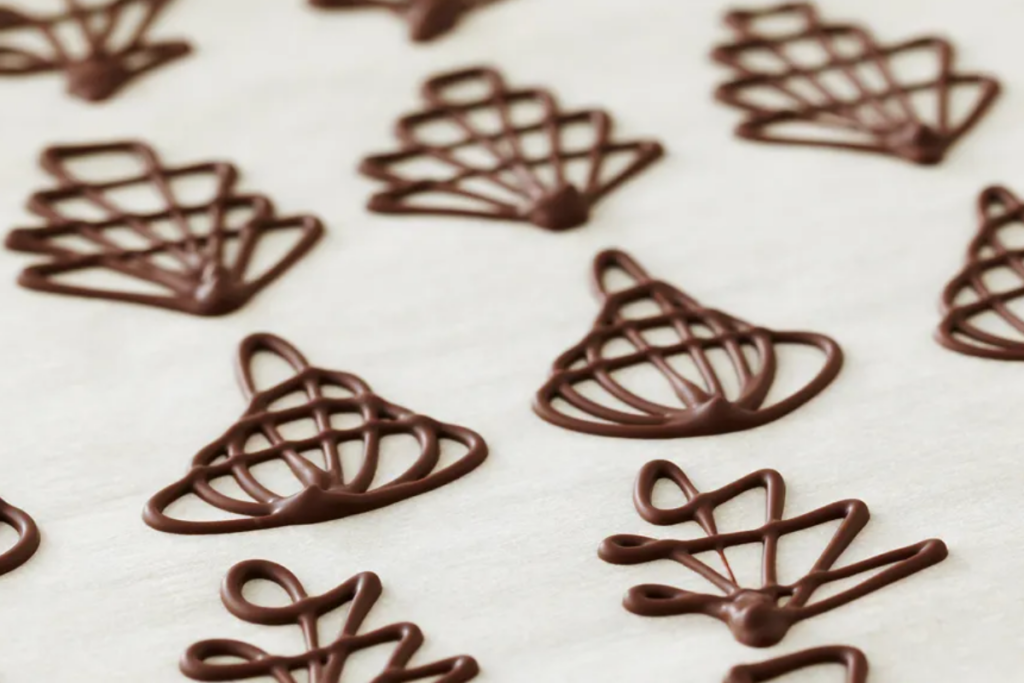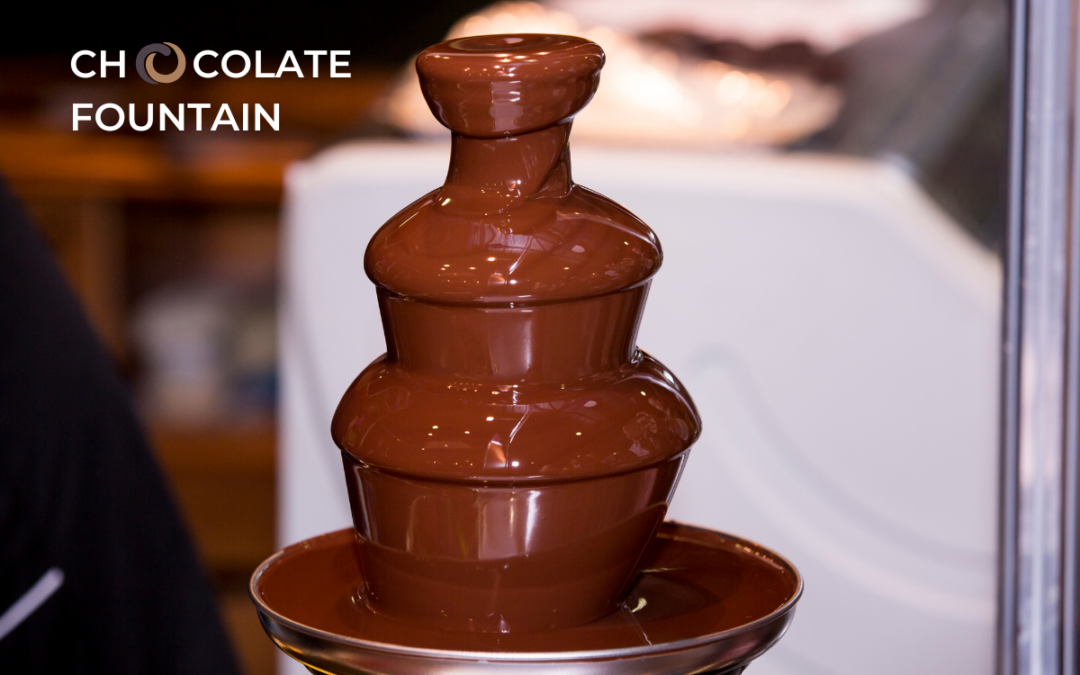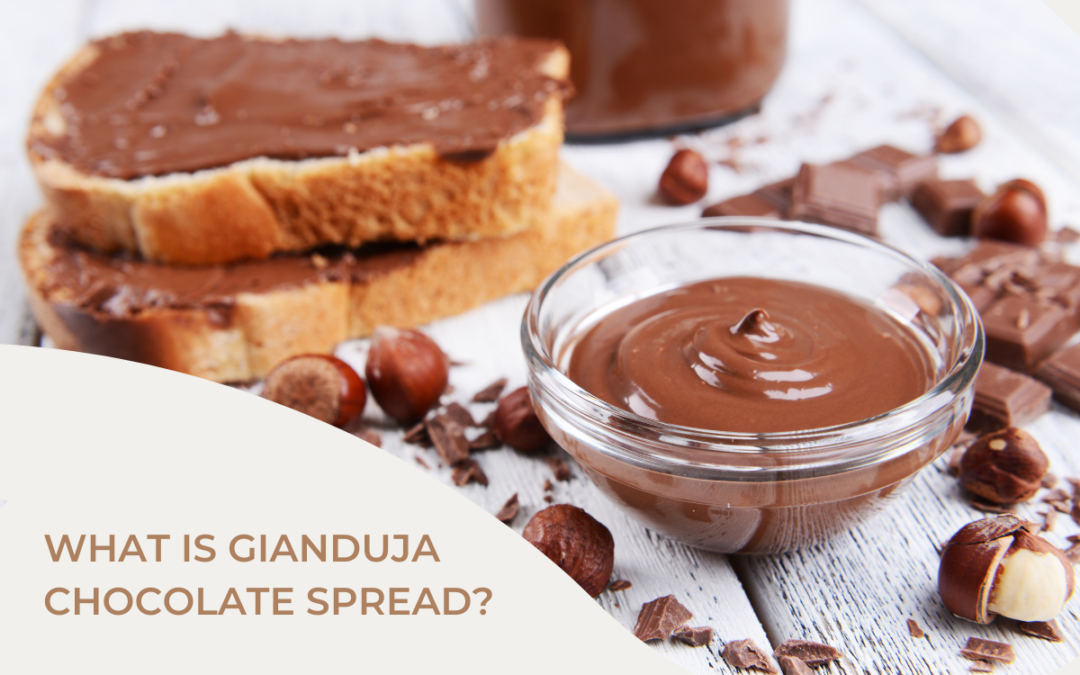Have you ever wondered what makes cacao trees so special? One of their most unique features is “cauliflory”—where flowers and fruits grow directly on the trunk and main branches. This rare trait is important for cocoa farming, affecting how the pods are harvested and the quality of the chocolate we enjoy.
In this article, we’ll explain cauliflory, why it’s important, and how it shapes the journey from flower to pod to delicious chocolate.
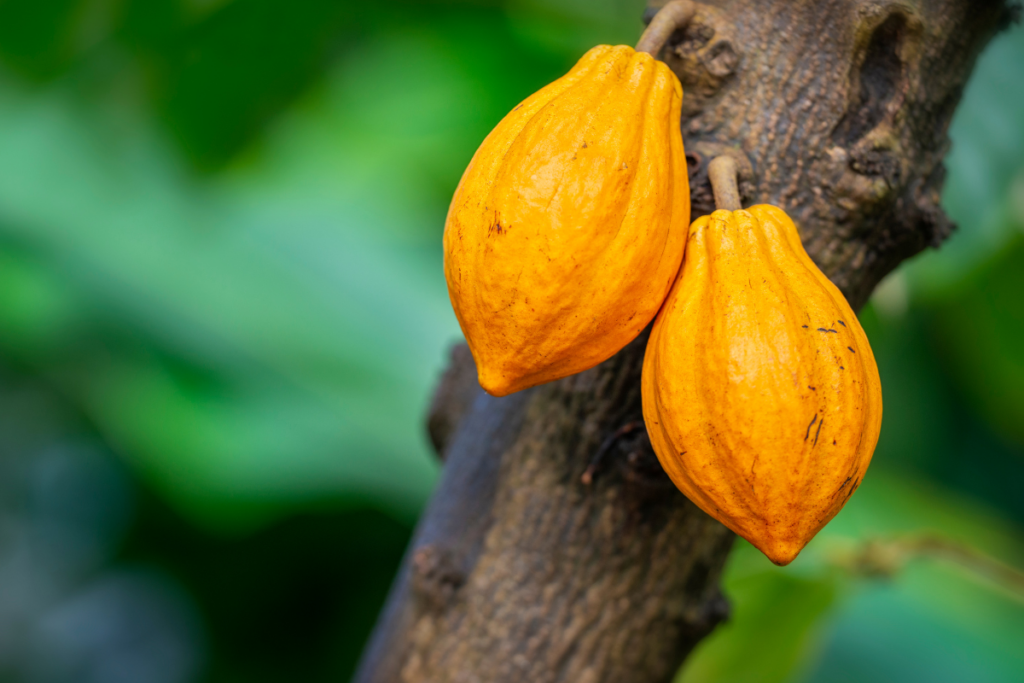
What Is cauliflory?
Cauliflory is a special trait where flowers and fruits grow directly on a plant’s trunk and main branches instead of on smaller stems or new shoots (which is how most of the fruits you buy in the store grow, such as apples, oranges, peaches, cherries, etc.). One of the most common “fruits” that is also an example of cauliflory is coffee, where the coffee cherries grow on the main branches of the plant. Other examples of cauliflory include jack fruit and papaya. In cacao plants, this feature stands out because it lets the large cacao pods grow on the stronger parts of the tree.
This has several benefits. Flowers on the trunk are clustered together which makes it easy for small pollinators like midges to reach them efficiently, which is key for cocoa production. It also makes harvesting simpler since farmers can access the pods that are clustered on the trunk and thick branches at the center of the tree. Plus, growing fruit on the trunk reduces stress and breakage on thinner branches, keeping the tree healthier. Cauliflory not only shapes how cacao trees grow but also supports the entire process of farming and turning cocoa into chocolate.
Learn more about cacao trees in this article, Cacao trees 101: From cacao plants to cocoa beans
Where and how cacao pods form on the tree
As described, cacao pods form directly on the trunk and main branches of the cacao tree, an unusual growth pattern in the world of fruiting trees. This adaptation allows the tree to support the weight of the large, heavy pods on its strongest parts. The flowers, which later develop into pods, grow in clusters along these thick, sturdy areas.
Once pollinated, the flowers develop into pods over several months, eventually maturing into the vibrant, football-shaped fruits that contain cocoa beans. The pods can grow large and heavy, so they need the support of a thick stem connected to a solid trunk. This process highlights the tree’s efficient design, making both natural reproduction and human harvesting easier.
The role of cauliflory in cocoa cultivation
Cauliflory is essential for cocoa farming.
For example, it makes flowers easily accessible for hand pollination of the cacao flowers. If the flowers were at the ends of the branches on the exterior of the tree, it would be very difficult for farmworkers to access the flowers. Since the flowers are on the main trunk and start just above ground level, hand pollination is possible without the dangers of climbing trees or falling off ladders. Improving pollination rates is essential to ensuring successful pod production.
There are also some challenges created as a result of cauliflory. Each cacao pod has to be hand harvested from the tree by cutting the stem with a blade. If the pod is pulled off or twisted off, it will do damage to the trunk and that will reduce the number of flowers in future years. So, while the pod may be easier to access, modern harvesting techniques, such as vibratory fruit harvesting cannot be used. Cacao pod harvesting is a manual, labor-intensive process.
Impact on flavor and chocolate quality
Cauliflory affects the flavor and quality of chocolate by helping the tree produce large, healthy cacao pods. With pods growing on the trunk and main branches, from an evolutionary perspective, the tree can develop bigger, better fruit, leading to high-quality beans that ferment well—essential for creating rich chocolate flavors.
This growth pattern also makes it easier to harvest pods when they are fully ripe, preserving their natural sweetness and flavor. Not all the pods ripen at the same time, so being able to examine the fruit is critical to optimal ripening. Too soon, and the sugars and flavors have not developed; too late and the seeds will have sprouted, changing the chemical composition of the beans. With properly timed harvesting, the result is superior cocoa beans that contribute to the deep taste and aroma of fine chocolate.
Selecting and breeding cauliflorous cocoa varieties
Selecting and breeding cauliflorous cocoa varieties aim to boost the natural benefits of cauliflory, improving both cocoa quality and yield.
Important factors in selection include:
- Flowering: Selecting varieties that generate lots of flowers year over year.
- Pod quality: Choosing varieties with well-formed pods that produce beans with great flavor.
- Maturation and ripening: Selecting varieties that ripen evenly, making harvesting more predictable.
- Disease resistance: Breeding plants that resist common diseases, leading to healthier trees and better yields.
For more great articles and recipes, check out the rest of our CocoTerra blog.
If you have any questions or comments, feel free to contact us through our social media channels. We are @cocoterra_co on Instagram and Pinterest and @cocoterraco on X (aka Twitter) and Facebook.

